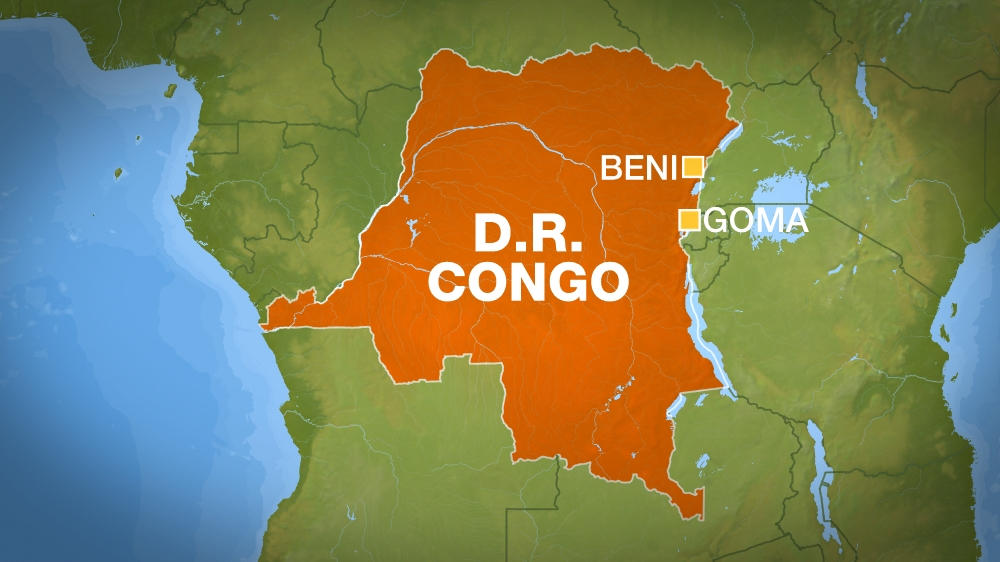Congo on the Brink: Growing Conflict Raises Fears of Regional War.
April 21, 2025politics#analysis

The humanitarian crisis in the eastern Democratic Republic of Congo (DRC) is reaching alarming new levels. Armed clashes between the Congolese military and the March 23 Movement (M23), reportedly supported by Rwandan forces, continue to escalate. As the fighting intensifies, the risk of a full-blown regional war looms large. If current peace efforts fail, the consequences could echo the devastation of the Congo Wars and threaten millions of lives.
More than 230,000 people have already been displaced this year alone. With no end in sight, and little global attention, the crisis is worsening by the day.
Mineral Wealth and the Roots of Conflict
While the official narrative cites security concerns, many observers believe the deeper motive is control over the DRC’s vast mineral resources. Rwanda has significantly increased its mineral exports during the conflict, despite producing less domestically. This suggests a large volume of minerals is being extracted from Congolese territory under contested control.
The eastern DRC holds some of the richest deposits of coltan, gold, and cobalt in the world. With limited infrastructure connecting these areas to Kinshasa, Rwanda's close proximity has made it easier to exploit the resources and avoid international scrutiny. This economic interest is likely a major driver behind continued Rwandan involvement.
Historical Injustice Still Haunts the Region
The roots of the conflict run deeper than minerals. Colonial-era policies imposed by Belgium left behind ethnic divisions and political instability. Tensions between communities, particularly around identity and land, have persisted for decades. The legacy of colonialism still shapes the region’s politics and fuels cycles of violence.
Today’s conflict is not only about present-day disputes but also about historical wounds that were never healed.
Peace Talks Offer Hope, but Trust Is Fragile
Efforts to broker peace are ongoing, with a ceasefire proposal currently on the table through Qatari mediation in Doha. However, trust between parties is low. A ceasefire agreement made in August 2024 was broken within weeks, when M23 resumed its offensive. The DRC, wary of repeating the same mistakes, may be hesitant to fully commit without guarantees.
Meanwhile, the withdrawal of peacekeeping troops from regional coalitions and the arrival of more Ugandan soldiers is changing the dynamics on the ground. These developments could either push parties toward serious negotiations or trigger a new wave of violence.
Refugees in Need, But Support Is Lacking
The conflict has already displaced hundreds of thousands of people. If the fighting spreads further, that number will skyrocket. The DRC lacks the infrastructure and capacity to care for this growing population of refugees. International humanitarian assistance is urgently needed, yet global response has been minimal.
The United States has provided little more than statements, while the European Union’s response has been fragmented. France has shown some engagement, but it is not enough to address a crisis of this magnitude.
Strategic Risks of Expansion
As M23 pushes closer to Kinshasa, the conflict could grow more intense. Infrastructure in central DRC allows for faster troop movements and military response, which could stall M23’s advance. However, this might also provoke M23 to increase forced recruitment and rely more heavily on child soldiers, deepening the human toll.
A more likely scenario is that M23 targets the cobalt-rich regions in southern Congo, a strategic move that would keep them close to Rwandan supply lines and avoid overstretching their forces.
Uganda and Burundi Could Be Drawn Deeper
Uganda’s increasing involvement and Burundi’s concerns about refugee inflows are raising fears that neighboring countries may be pulled deeper into the conflict. Recent skirmishes between M23, Rwandan forces, and Burundian troops suggest regional tensions are rising fast.
If the situation deteriorates, Burundi may feel compelled to escalate its military response. Uganda, too, could shift from indirect involvement to open conflict, depending on how events unfold.
The Role of the International Community
The global response so far has been insufficient. Sanctions alone are not enough to curb the violence or halt illegal mineral exploitation. Western nations and global institutions must engage more seriously with African-led peace initiatives and support long-term conflict resolution strategies that address the root causes of the crisis.
Sanctions on Rwanda’s mineral trade, especially in sectors like gold, coltan, and tin, should be considered, while ensuring that humanitarian aid continues to reach those in need. Aid to Rwanda could be reassessed if its involvement in the conflict persists, while support to displaced populations in the DRC should be scaled up immediately.
For Uganda, a balanced diplomatic approach is necessary. Development aid and defensive military support can be used as incentives to discourage escalation. Clear consequences, such as trade restrictions, should be communicated to deter direct involvement in the conflict.
Time to Act Is Now
The DRC is at a crossroads. Without decisive action, the crisis could spiral into a disaster affecting millions across Central and East Africa. This is not just a mineral war. It is a complex struggle tied to history, identity, and survival.
The international community must move beyond statements and act with unity and urgency. Only through meaningful engagement and support for African-led solutions can the cycle of conflict be broken and lasting peace achieved.


